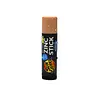What's inside
What's inside
 Key Ingredients
Key Ingredients

 Benefits
Benefits

 Concerns
Concerns

 Ingredients Side-by-side
Ingredients Side-by-side

Bis-Ethylhexyloxyphenol Methoxyphenyl Triazine
Skin ConditioningButyl Methoxydibenzoylmethane
UV AbsorberEthylhexyl Triazone
UV AbsorberOctocrylene
UV AbsorberAcrylates/C10-30 Alkyl Acrylate Crosspolymer
Emulsion StabilisingC12-15 Alkyl Benzoate
AntimicrobialAloe Barbadensis Leaf Juice
Skin ConditioningMagnesium Aluminum Silicate
AbsorbentDibutyl Adipate
EmollientTocopheryl Acetate
AntioxidantTetrasodium EDTA
Glycerin
HumectantHydrated Silica
AbrasiveHydroxyacetophenone
AntioxidantIsocetyl Alcohol
EmollientMicrocrystalline Cellulose
AbsorbentPhenoxyethanol
PreservativeWater
Skin ConditioningPvp
Emulsion StabilisingRice Bran Wax Ethyl Esters
AntioxidantSodium Stearoyl Glutamate
CleansingTriacontanyl Pvp
HumectantTriethanolamine
BufferingBis-Ethylhexyloxyphenol Methoxyphenyl Triazine, Butyl Methoxydibenzoylmethane, Ethylhexyl Triazone, Octocrylene, Acrylates/C10-30 Alkyl Acrylate Crosspolymer, C12-15 Alkyl Benzoate, Aloe Barbadensis Leaf Juice, Magnesium Aluminum Silicate, Dibutyl Adipate, Tocopheryl Acetate, Tetrasodium EDTA, Glycerin, Hydrated Silica, Hydroxyacetophenone, Isocetyl Alcohol, Microcrystalline Cellulose, Phenoxyethanol, Water, Pvp, Rice Bran Wax Ethyl Esters, Sodium Stearoyl Glutamate, Triacontanyl Pvp, Triethanolamine
Zinc Oxide
Cosmetic ColorantTitanium Dioxide
Cosmetic ColorantEthylhexyl Methoxycinnamate
UV AbsorberDiethylamino Hydroxybenzoyl Hexyl Benzoate
UV FilterEthylhexyl Palmitate
EmollientCI 77891
Cosmetic ColorantCeresin
Emulsion StabilisingOctocrylene
UV AbsorberMicrocrystalline Wax
Emulsion StabilisingEthylhexyl Triazone
UV AbsorberHydrated Silica
AbrasiveVp/Eicosene Copolymer
CI 77492
Cosmetic ColorantCI 77491
Cosmetic ColorantSynthetic Wax
AbrasivePolyhydroxystearic Acid
EmulsifyingTocopheryl Acetate
AntioxidantAloe Barbadensis Leaf Extract
EmollientCI 77499
Cosmetic ColorantKaolin
AbrasiveZinc Oxide, Titanium Dioxide, Ethylhexyl Methoxycinnamate, Diethylamino Hydroxybenzoyl Hexyl Benzoate, Ethylhexyl Palmitate, CI 77891, Ceresin, Octocrylene, Microcrystalline Wax, Ethylhexyl Triazone, Hydrated Silica, Vp/Eicosene Copolymer, CI 77492, CI 77491, Synthetic Wax, Polyhydroxystearic Acid, Tocopheryl Acetate, Aloe Barbadensis Leaf Extract, CI 77499, Kaolin
Ingredients Explained
These ingredients are found in both products.
Ingredients higher up in an ingredient list are typically present in a larger amount.
Ethylhexyl Triazone is a modern chemical sunscreen that protects from UV-B radiation.
It is the most effective of existing UV-B filters, as it provides the highest level of photo-stable absorption. It protects from the entire UV-B range (280 to 320nm), with it's highest level of protection at 314nm.
Ethylhexyl Triazone is oil soluble, oderless and colorless, which mean it is able to be incorporated into a variety of different formulations.
It is not currently available within the United States due to slow changing FDA regulations. Outside of the US, it is used in formulations at concentrations up to 5%.
Learn more about Ethylhexyl TriazoneHydrated Silica is a type of silicon dioxide. It is called 'hydrated silica' because it is silica with extra bonded water atoms.
It is an absorbent and abrasive, meaning it is exfoliating.
Silica is often used for absorption and can help reduce shine when products are applied.
Learn more about Hydrated SilicaOctocrylene protects skin from sun damage. It absorbs UV-B with peak absorption of 304 nm. It is a common sunscreen ingredient and often paired with avobenzone, a UVA filter. This is because octocrylene stabilizes other sunscreen ingredients by protecting them from degradation when exposed to sunlight. Octocrylene is a photostable ingredient and loses about 10% of SPF in 95 minutes.
Octocrylene also acts as an emollient, meaning it helps skin retain moisture and softens skin. It is oil-soluble and hydrophobic, enhancing water-resistant properties in a product.
Those who are using ketoprofen, a topical anti-inflammatory drug, may experience an allergic reaction when using octocrylene. It is best to speak with a healthcare professional about using sunscreens with octocrylene.
The EU allows a maximum of these concentrations:
Learn more about OctocryleneTocopheryl Acetate is AKA Vitamin E. It is an antioxidant and protects your skin from free radicals. Free radicals damage the skin by breaking down collagen.
One study found using Tocopheryl Acetate with Vitamin C decreased the number of sunburned cells.
Tocopheryl Acetate is commonly found in both skincare and dietary supplements.
Learn more about Tocopheryl Acetate